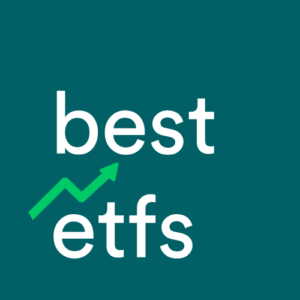Is it time to buy, hold or sell Macquarie Group Ltd (ASX:MQG) shares?
This is one of the most common questions that our senior investment analysts get asked by Australian investors seeking dividend income. It’s not exclusive to Macquarie Group Ltd, of course.
Commonwealth Bank of Australia (ASX:CBA) and Bendigo and Adelaide Bank Ltd (ASX:BEN) are also very popular stocks on the ASX.
Before I provide you with two valuation models you might use to answer the valuation question yourself, let’s consider why investors like bank shares in the first place.
Alongside the ASX technology and healthcare sectors, bank shares are a favourite for Australian investors. The largest banks, including Commonwealth Bank of Australia and National Australia Bank operate in an ‘oligopoly’. And while large international banks (I’m looking at you, HSBC) have tried to muscle in on our ‘Big Four’, foreign competitors’ success has been very limited.
[ls_content_block id=”3301″]
Reversing the PE ratio
Chances are, if you have been actively investing in shares for more than a few years you will have heard about the PE ratio. The price-earnings ratio or ‘PER’ compares a company’s share price (P) to its most recent full-year earnings per share (E). If you bought a coffee shop for $100,000 and it made $10,000 of profit last year, that’s a price-earnings ratio of 10x ($100,000 / $10,000). ‘Earnings’ is just another word for profit. So, the PE ratio is basically saying ‘price-to-yearly-profit multiple’.
The PE ratio is a very simple tool but it’s not perfect so it should only be used with other techniques (see below) to back it up. That said, one of the simple ratio strategies even professional analysts will use to value a share is to compare the company’s PE ratio with its competitors to try to determine if the share is overvalued or undervalued. It’s akin to saying: ‘if all of the other banking sector stocks are priced at a PE of X, this one should be too’. We’ll go one step further than that in this article. We’ll apply the principle of mean reversion and multiply the profits per share (E) by the sector average PE ratio (E x sector PE) to calculate what an average company would be worth.
Using MQG’s share price today, plus the earnings per share data from its 2019 financial year, I calculate the company’s PE ratio to be 16.7x. This compares to the banking sector average of 11x.
Reversing the logic here, we can take the profits per share (EPS) ($6.949) and multiply it by the ‘mean average’ valuation for MQG. This results in a ‘sector-adjusted’ share valuation of $76.98.
[ls_content_block id=”3409″ para=”paragraphs”]
Wall Street’s oldest valuation model
A dividend discount model or DDM is a more robust way of valuing companies in the banking sector.
DDM valuation models are some of the oldest valuation models used on Wall Street and even here in Australia. A DDM model uses the most recent full year dividends (e.g. from 2019/2020) or forecast dividends for next year and then assumes the dividends remain consistent or grow slightly for the forecast period (e.g. 5 years or forever).
To keep it simple, I’ll assume last year’s annual dividend payments are consistent. Warning: last year’s dividends are not always a good input to a DDM because dividends are not guaranteed since things can change quickly inside a business — and in the stockmarket. So far in 2020, the Big Banks have been cutting or deferring their dividends.
In any case, using my DDM we will assume the dividend payment grows at a consistent rate in perpetuity (i.e. forever), for example, at a yearly rate between 1.5% and 3%.
Next, we have to pick a yearly ‘risk’ rate to discount the dividend payments back into today’s dollars. The higher the ‘risk’ rate, the lower the share price valuation.
I’ve used a blended rate for dividend growth, and I’m using a risk rate between 9% and 14%.
My DDM valuation of MQG shares is $69.38. However, using an ‘adjusted’ dividend payment of $4.00 per share, the valuation drops to $45.49. The valuation compares to Macquarie Group Ltd’s share price of $116.10.
Summary
These two models are just the starting point of the research and valuation process. Banks are very complex companies and if the Global Financial Crisis (GFC) — see Lehman Brothers — taught us anything, it’s that even the ‘best’ banks can go out of business and take shareholders with them!
If I were looking at Macquarie Group Ltd shares and considering an investment, I’d want to know more about the bank’s growth strategy. For exmaple, are they pursuing more lending (i.e. interest income) or more non-interest income (fees from financial advice, investment management, etc.). Then, I’d take a close look at economic indicators such as unemployment, house prices and consumer sentiment. Finally, it’s always important to make an assessment of the management team.
[ls_content_block id=”3302″ para=”paragraphs”]



